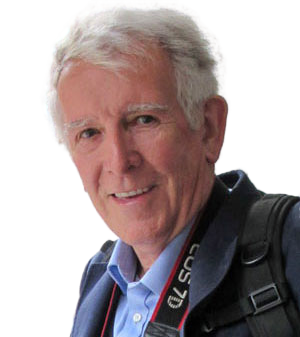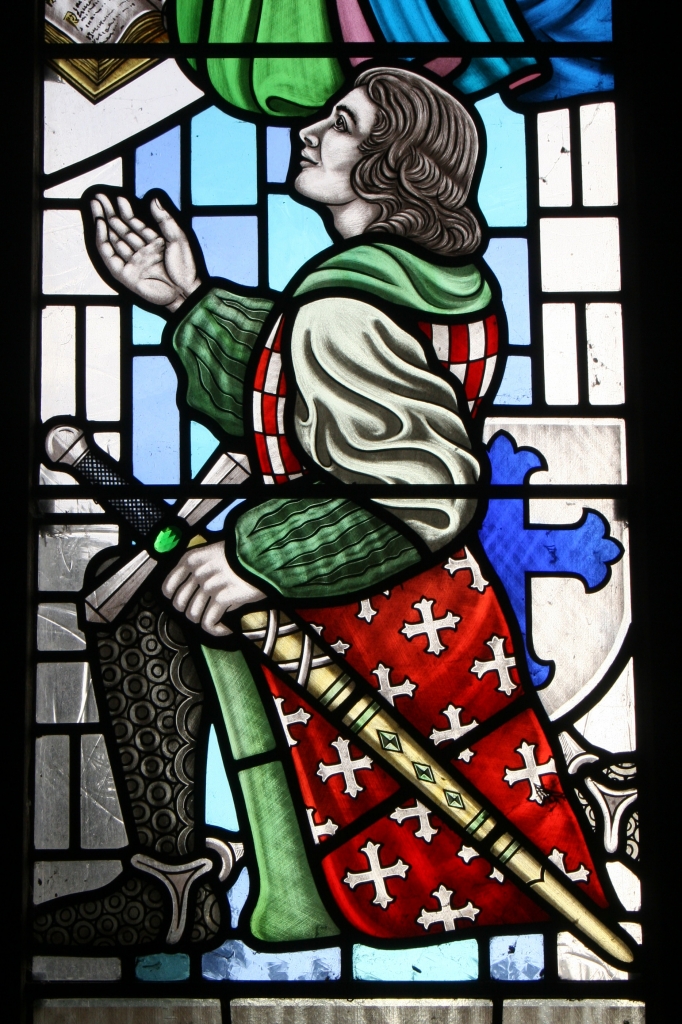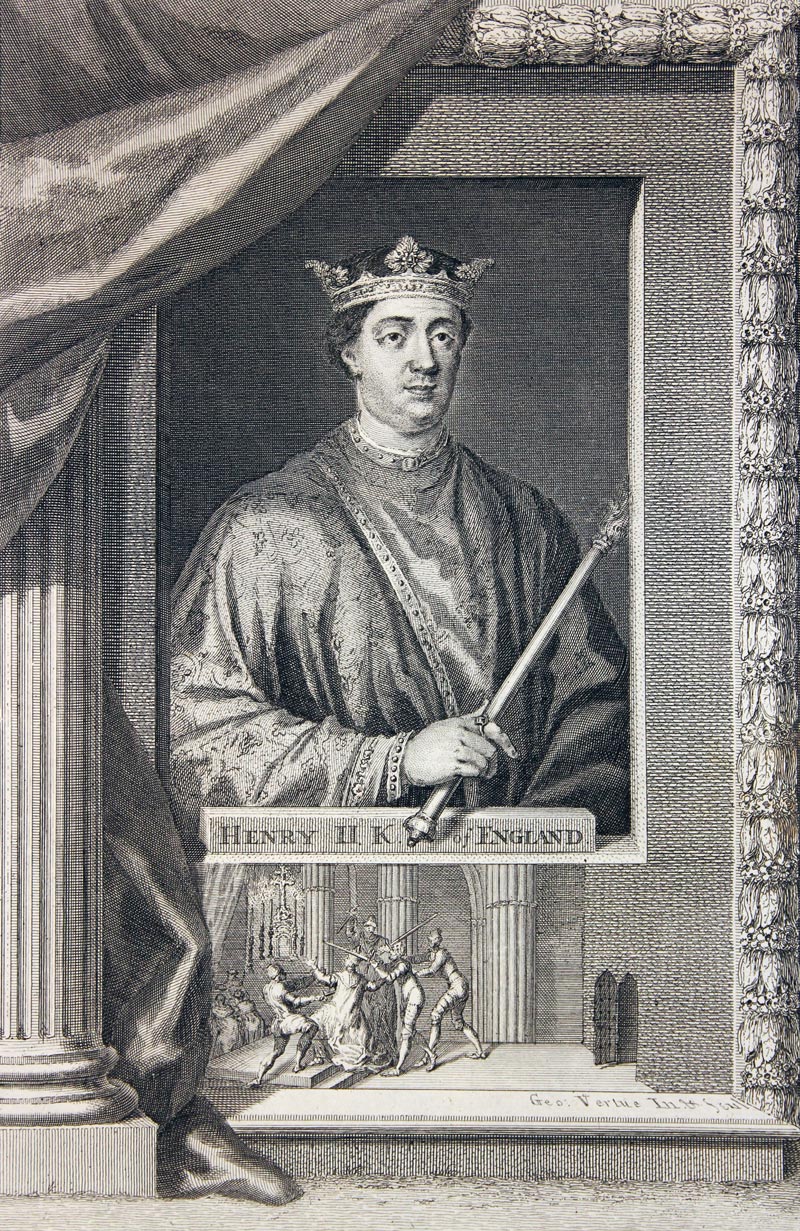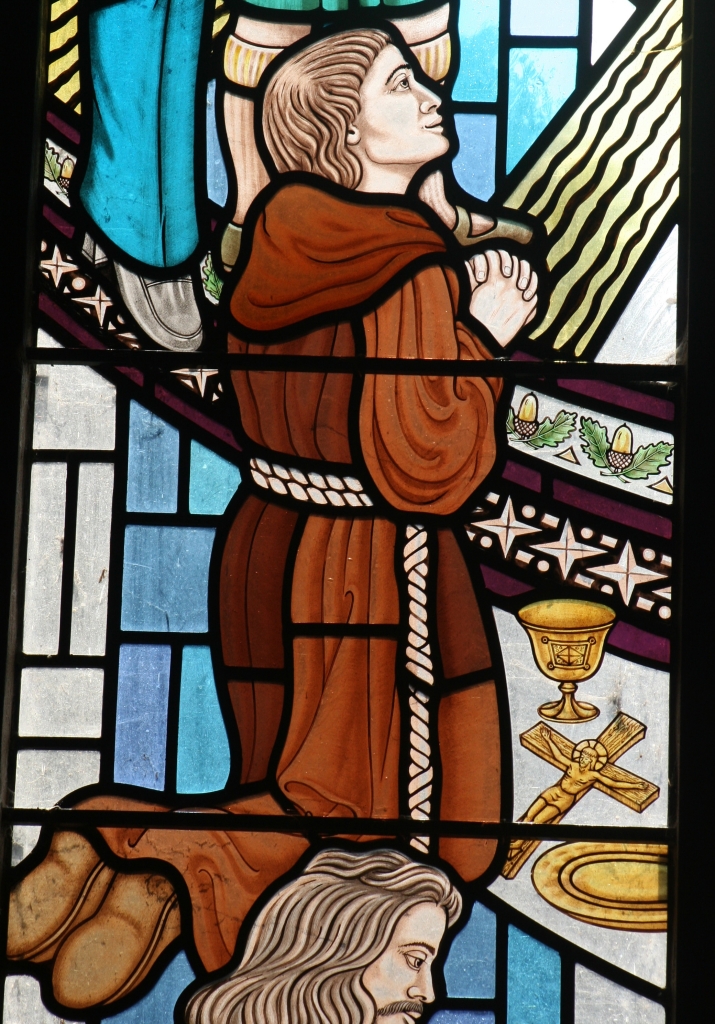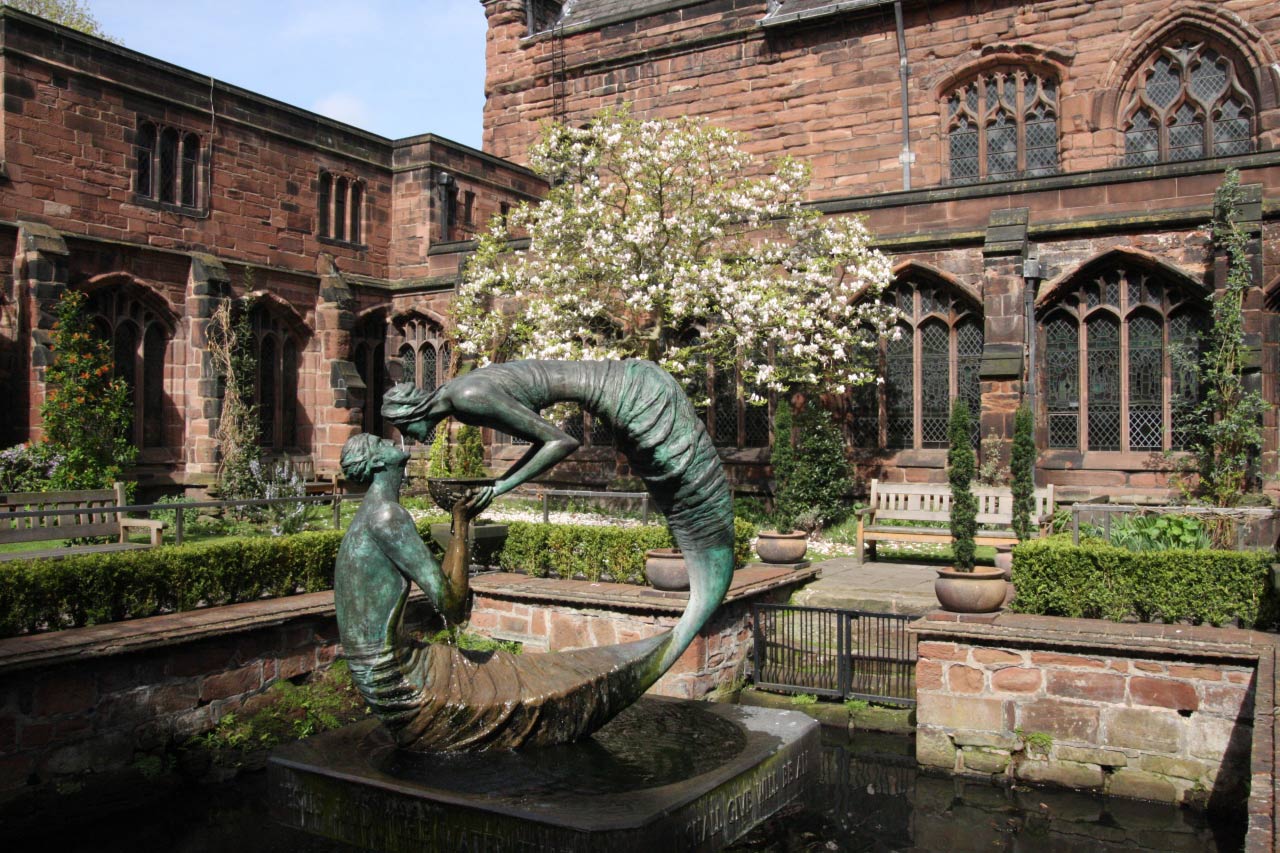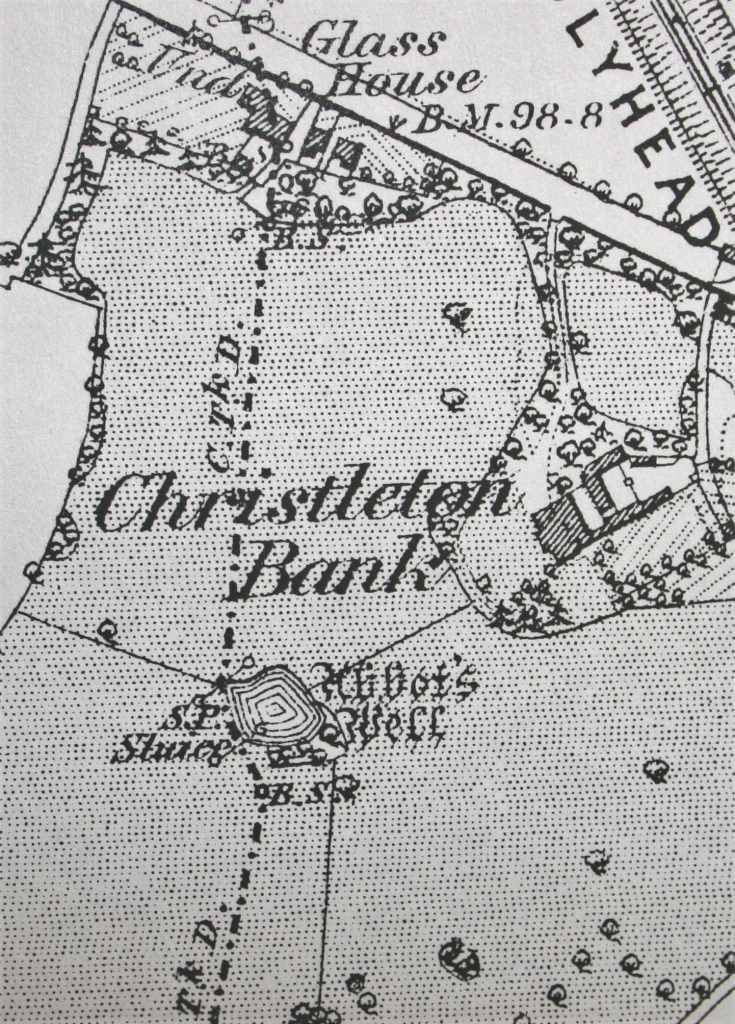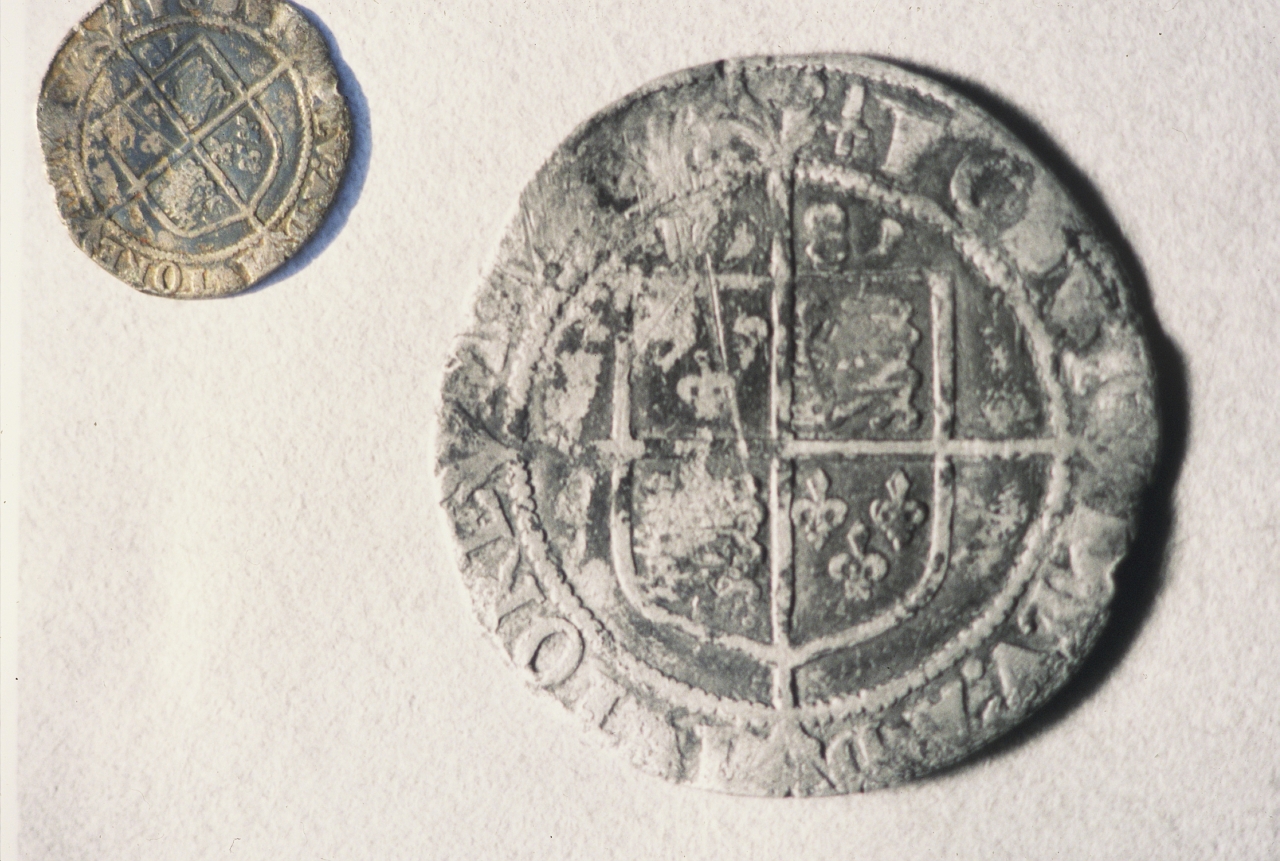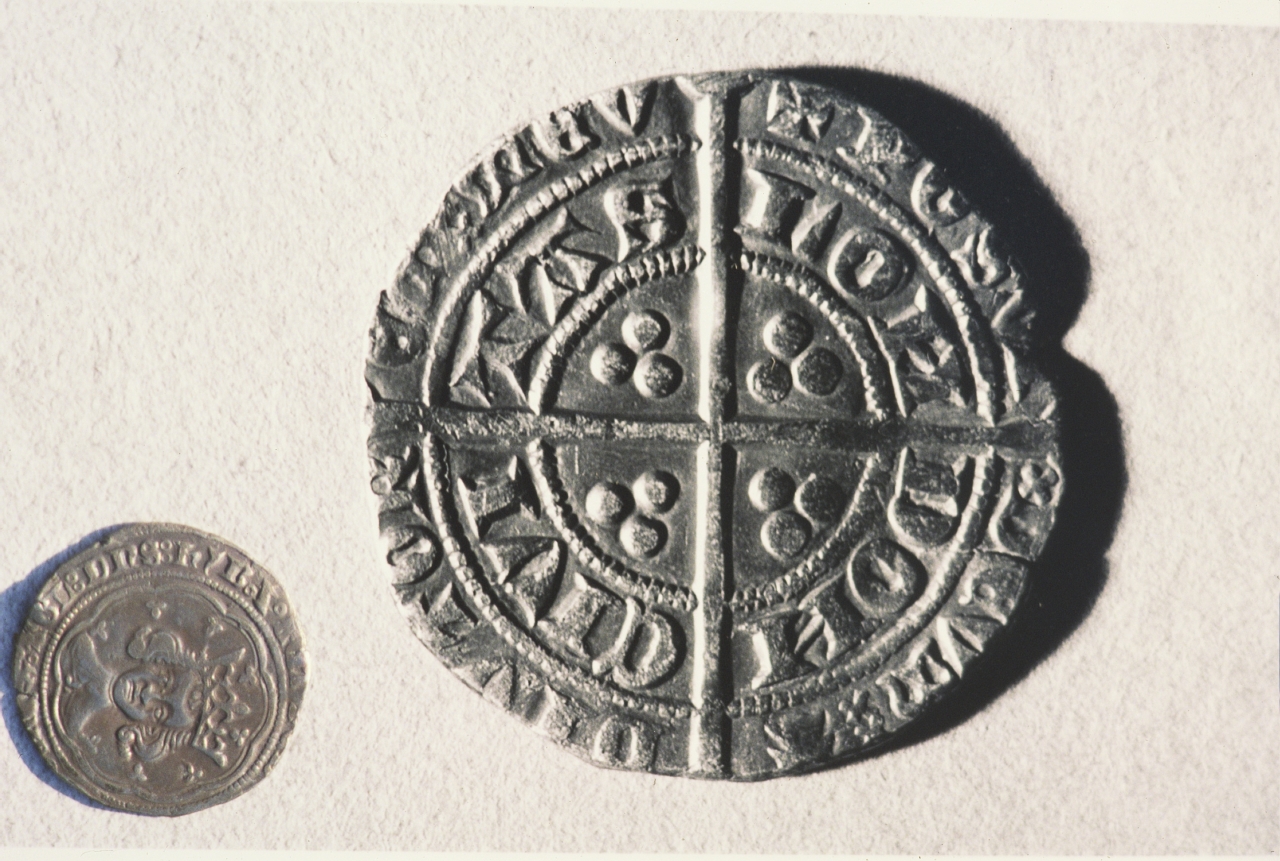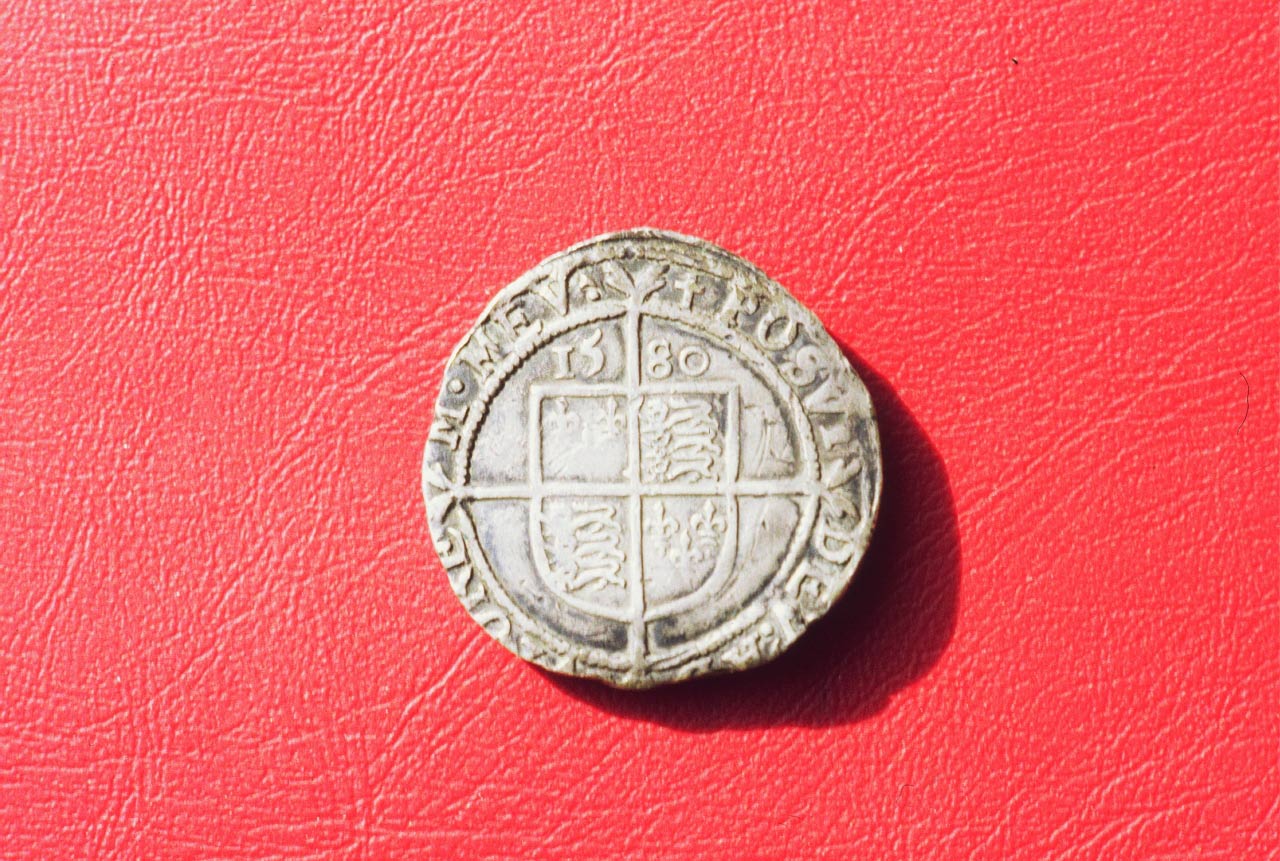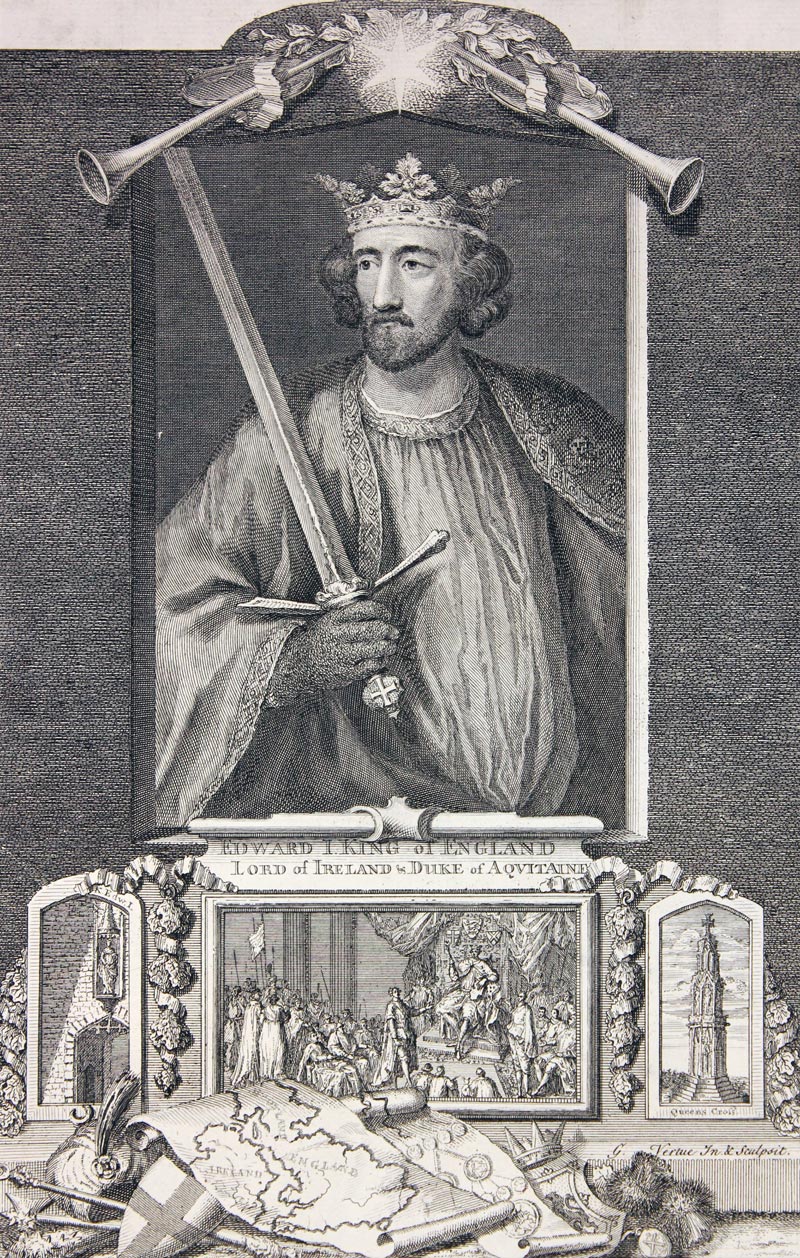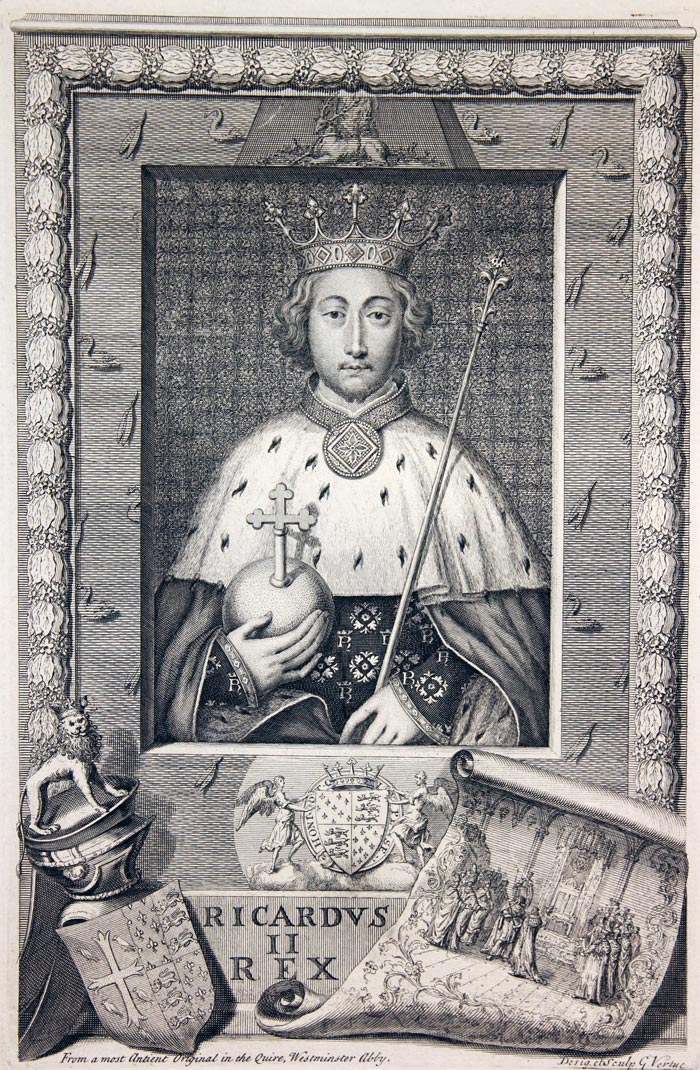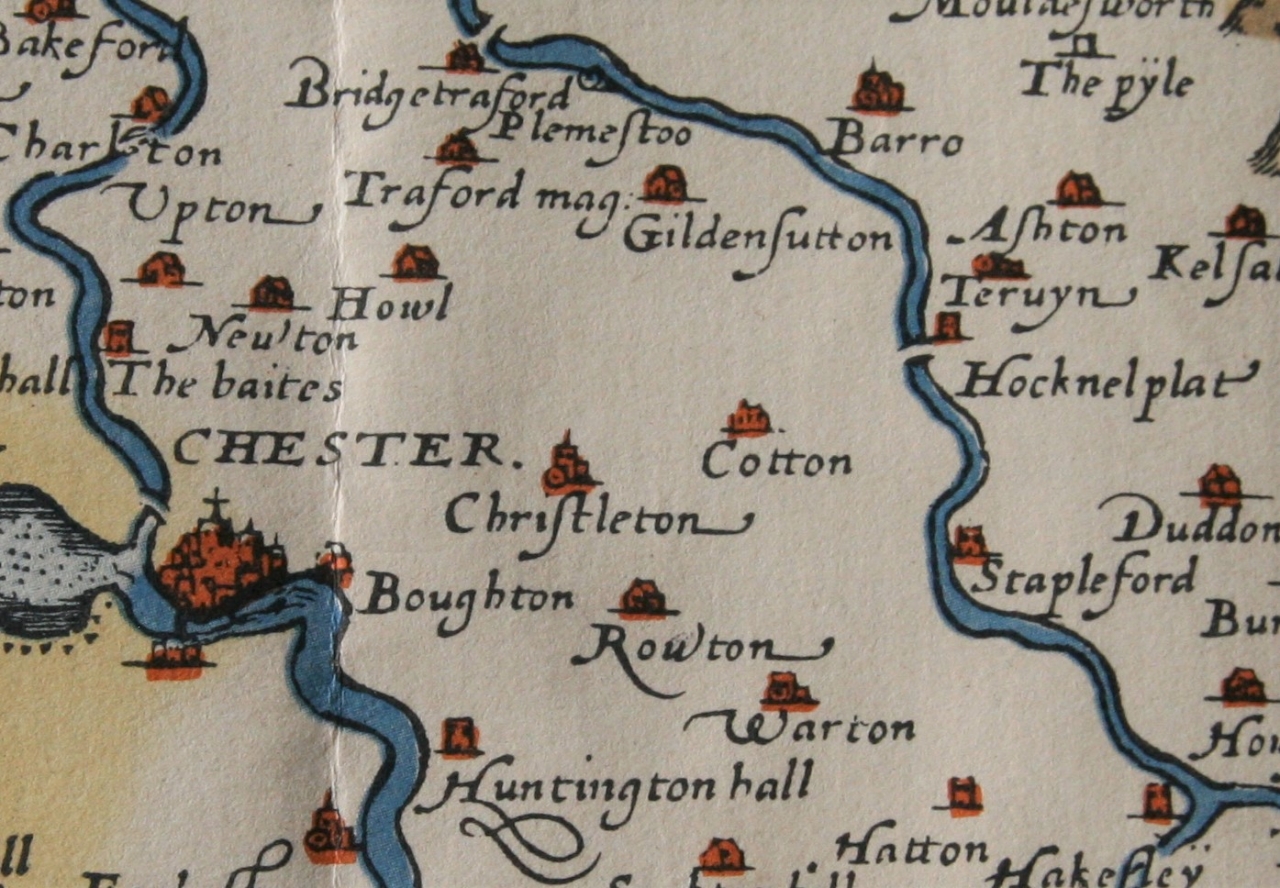
The Manor of Christleton originally formed part of the Norman Barony of Malpas and came into the hands of the Bermingham family in the time of Henry II. William de Bermingham is said to have sided with Simon de Montfort and was killed at the Battle of Evesham in 1265. By the dictum of Kenilworth in 1266, ransoms were made payable by the rebels, and they and their heirs were allowed to redeem their lands. As late as 1285 the ransom for Bermingham’s land had not been fully paid, and Isabel his wife only held between a third and fourth part of the lands. An order was issued that the lands in Buckinghamshire should be taken into the King’s hands, and a similar order applied to the property in Christleton.
-

Baron of Malpas
-

King Henry II
In 1280 the Abbot of St. Werburgh needed to defend himself against Isabel grand-daughter of Robert and her husband Philip Burnell. Isabel was of the opinion that the monks had “by practices somewhat removed from heavenly” got possession of property in Christleton and Littleton. She and her husband were determined to get it back again. They took preliminary steps for suing the monks, but they made a payment “out of court” of £200, and had their possession confirmed. Shortly afterwards in 1282 the Burnells granted the monks of St. Werburgh “The fountain of Christleton” which became known as the Abbots Well. A cistern 20ft square was dug in a field on the property of Christleton Bank, on Whitchurch Road (now The Mercure Hotel), and another in the cloisters of the Abbey, called “the sprice”. These two were connected by underground clay pipes about 2” in diameter, and the water travelled by gravity through Great Boughton to the Abbey. A patent granted by Edward I enabled the monks to lay these pipes across all intervening lands, and even gave permission for part of the city walls to be taken down to enable this to happen. The cistern at Christleton was in what became known as the “Well Field” and was once the property of Mrs Ambrose Dixon. In 1840 it was converted into a fish pond and was noted for its pure water. Traces of leaden and wooden pipes were said to have been found, although a report written in the Chester Chronicle in 1885 clearly states they were made of clay.
-

The Abbot
-

Well in the Cloisters of Chester Cathedral
-

Abbots Well Christleton
-

from a Medieval hoard
-

from a Medieval hoard
-

from time of Elizabeth I. Found at Manor House, Christleton
-

Edward I
-

Richard II
In 1282, Edward I granted a charter to William de Bermyngham conferring on him all the “free warren” in Christleton and the Manor of Christleton within it. “Free warren” meant that the King granted the right for a land owner to kill game on his estate, and he only did this for those who served him well. Game might have included- roe deer, hares and rabbits, partridge, rails and quails, woodcocks and pheasants, mallards and herons.
William gave the Manor to his son, also William, to endow Isabel, daughter of Sir Thomas de Estley, on their marriage. Isabel had a strong character, and with the support of her husband tried to sue a Peter de Chalons for part of the Manor of Christleton which he said that he owned. The outcome was shown that a John de Chalons did have possessions of tenements in Christleton, Littleton, Rowton, and Magna & Parva Cotton in 1325. After this Christleton and its surrounds appear to have been reunited with the Barony of Malpas.
Sometime later in Richard II’s reign between 1377-1399, the Lordship passed out of the Bermynghams to the Brower or Browes family, and in 1397 a Nicholas Pen, Chaplain obtained of Sir Hugh Browe the manors of Boardsley* and Church Christleton. He received 34 messuages, one mill at Stamford, one salt works and £4 rent in Barrel, Tushingham, Macefen, Bickley, Tilston, Malpas, Littleton, Fulwich, Church Christleton, Hole, Rowton and Coton. Sir Hugh Browe did not keep these possessions for long as he joined in a rebellion against King Henry IV. The chief conspirators were Percy, Earl of Northumberland, and his son Hostpur, Owen Glendower and Worcester, who joined the great body of archers from Cheshire. Sir Hugh Browe was one of the Cheshire Knights who fought on the losing side in the Battle of Shrewsbury.
For taking part in the battle Sir Hugh lost all his lands and his goods which were awarded to John Mainwaring of Peover, who was the steward of Prince Henry. John Mainwaring was also made Sheriff of Cheshire, and when he died in 1410 was succeeded by his brother Randle. The Mainwarings were said to be direct descendants of Ranulphus, a famous crusader, the builder of Beeston Castle. John Mainwaring had initially earned fame together with Thomas le Grosvenor, by raising a troop of soldiers to invade Ireland in 1399. He was then made an attendant to the Prince of Wales, later Henry V. John had no children and he bestowed the Manor of Christleton on Thomas de Grosvenor, but by 1422 it appears to be in the ownership of John de Macclesfield, and passed on by him to Humphrey, later Duke of Buckingham. He in turn sold the Manor to Sir William Sneyd of of Keele, who in turn sold it to Sir John Harper of Calke Abbey in Derbyshire.
-

Court of Hugh Lupus
-

Christleton on John Speed's map 1611
References
Christleton The History of a Cheshire Village. Pub. Christleton Local History Group 1979
Christleton 2000 years of History. Pub. Christleton Local History Group 2000
Please note.
I have used the spellings used in original documents where they exist, e.g. the family name Bermingham is also spelt as Bermyngham. Hole is Hoole, and Coton and Cotton are the same place. This name came from the owner of the land, a William de Coton who was Lord of Coton in the 14thC. He had two sons, and part of the land was apportioned to one named Edmund, hence Cotton Edmunds. The other part transferred to the Abbey, and became known as Cotton Abbots.
* Boardsley could possibly be the village of Burwardsley as all the other places mentioned are south of Chester.
